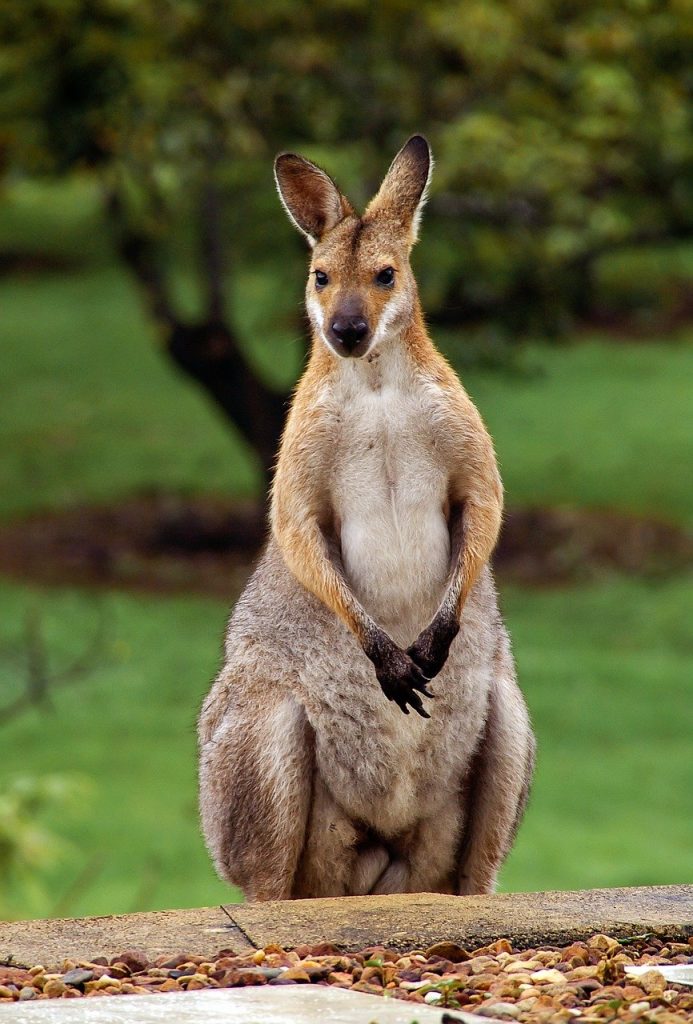Biodiversity
Predation threatens many native species with extinction
Benefits to biodiversity
When it comes to food, wild dogs are not fussy diners, they prey on 229 native animals. They hunt as individuals for smaller and medium-sized prey or in packs for large prey and will readily scavenge, eating the remains of dead stock and road kill. For some endangered species, predation by wild dogs and other introduced predators is their greatest threat.
Wild dog control programs support conservation efforts for many native species and if Australians fail to control the threat of predation by wild dogs, feral cats and foxes some of our native species will remain threatened.

“We’ve got little red-neck wallabies back again. Very rarely you saw one before, and now they’re thriving. I’ve even seen lyrebirds getting about in the last six months. It’s really good.”
Ian Junor, East Gippsland sheep producer
In addition to direct predation, wild dogs carry hydatid worms (Echinococcus granulosis), a zoonotic disease (transmittable to humans) that has a severe implications for our threatened wildlife. In smaller macropods, like the endangered Brush Tailed Rock Wallaby, hydatid cysts develop in the lungs, impairing pulmonary function, their ability to forage, reproduce and flee predators. As the primary host, wild dogs can be heavily infested but otherwise healthy. One caught near Mt Buller had 108,000 hydatid tape worms throughout its intestines but showed no ill effects.
Northern Hairy-nosed Wombat – image by Queensland Dept. of Environment and Heritage Protection
Baby northern quoll – image by Parks Australia
Image by Mathias Appel
Management methods
Most wild dog baiting uses meat baits impregnated with sodium fluoroacetate, commonly called 1080. This is an environmentally responsible option for invasive species control due to its minimal impact on native animals. Dogs and foxes are highly susceptible to 1080, and the small amount required to target these species poses a minimal threat to non-target species.
Scientific evidence shows small doses of 1080 does not adversely affect the overall population of non-target wildlife. 1080 is naturally occurring in 39 species of Australian native plants, most confined to the south-west of Western Australia, including Acacia georginae (Georgina gidgee) and members of the Gastrolobium and Oxylobium genera, making it ideal for targeting introduced species. To put native species’ tolerance into perspective, quolls are about 20 times and goannas about 550 times more tolerant to 1080 than dogs. The amount used in a dog bait is minute compared to what naturally occurs in plants.
Role of wild dogs in the ecosystem
Whether wild dogs and/or dingoes play a valuable role as apex predators is a question that has attracted considerable interest. Numerous scientific papers have claimed to provide evidence for the biodiversity benefits of dingoes. However the role of wild dogs and dingoes is likely to be complex and vary significantly across different environments and ongoing research has brought into question these claims.
Food and habitat availability plays a far greater role in managing our wildlife and introduced predators species than any pressure from wild dogs and dingoes.
There is also a widespread belief that wild dogs and dingoes can help conserve biodiversity by controlling feral cats and foxes but recent research does not support this theory.
Fancourt et al. investigated the relationship between dingoes and feral cats in central Queensland. Contrary to previous suggestions, they found that cats remained abundant, active and widespread, regardless of whether wild dogs and dingoes were present or absent, and regardless of where or when dogs were active.
Research is being carried out to further investigate the role of wild dogs in the environment.

Share